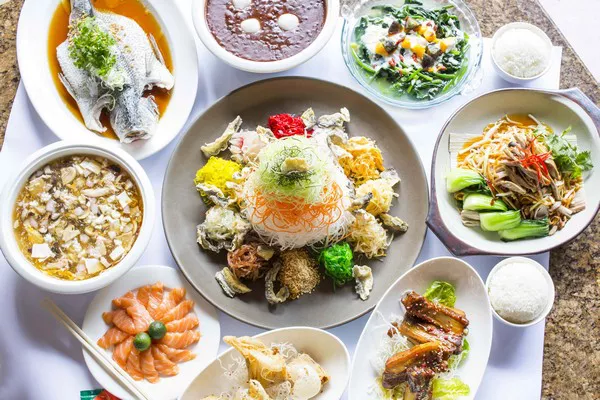New Year’s Day is a time for fresh beginnings, and across the globe, diverse culinary traditions take center stage to usher in the new year with a feast. From the American South to Japan, unique dishes symbolizing luck, prosperity, and longevity grace tables as people come together to celebrate the arrival of a new chapter. Here’s a look at 10 international New Year’s food traditions that go beyond the ordinary:
Hoppin’ John – American South
A Southern staple, Hoppin’ John combines pork-flavored field peas or black-eyed peas with rice, collards (representing money’s color), and cornbread. Rooted in African and West Indian traditions, this dish is believed to bring good luck in the new year, making it a cherished part of Lowcountry cooking.
Twelve Grapes – Spain
In Spain, a unique tradition unfolds at Puerta del Sol in Madrid. As the clock strikes midnight, revelers eat one grape for each toll of the bell. This century-old custom, thought up by grape producers in southern Spain, has spread across Spanish-speaking nations.
Tamales – Mexico
Tamales, corn dough filled with various savory ingredients, hold a special place in Mexican celebrations. Families come together to create these delightful parcels, often served on New Year’s with menudo, a tripe and hominy soup renowned for curing hangovers.
Oliebollen – Netherlands
Fried oil balls, or oliebollen, take the spotlight in the Netherlands on New Year’s Eve. These doughnut-like dumplings, dusted with powdered sugar, are traditionally enjoyed from street carts and at celebratory fairs.
Marzipanschwein – Austria and Germany
Sylvesterabend, or the eve of Saint Sylvester, is celebrated in Austria with a red wine punch and suckling pig for dinner. Tables are adorned with marzipan pigs, known as marzipanschwein, symbolizing good luck.
Soba Noodles – Japan
Japanese households bid farewell to the old year and welcome the new by consuming toshikoshi soba, buckwheat noodles, at midnight. The long noodles symbolize longevity and prosperity, while mochitsuki, the pounding of mochi rice cakes, is a prelude to the festivities.
King Cake – Around the Globe
The tradition of a New Year’s cake spans cultures worldwide, from the Greek Vasilopita to the Mexican Rosca de Reyes. These cakes, often consumed at midnight, contain a hidden coin or figure, promising prosperity to the fortunate finder.
Cotechino con Lenticchie – Italy
Italians celebrate La Festa di San Silvestro with cotechino con lenticchie, a sausage and lentil stew symbolizing good luck and fortune. The feast concludes with chiacchiere, fried dough balls, and prosecco.
Pickled Herring – Poland and Scandinavia
Abundant in Poland and Scandinavia, pickled herring, often consumed with cream sauce or onions, signifies prosperity. Polish Sledzie Marynowane, a special preparation, involves soaking salt herrings and layering them with onions, allspice, sugar, and white vinegar.
Kransekage – Denmark and Norway
Kransekage, a cake tower made of concentric rings of marzipan, graces tables in Denmark and Norway. Often decorated with ornaments and flags, this wreath cake is a centerpiece for special occasions, including New Year’s Eve.
As the world unites in bidding adieu to the old and embracing the new, these culinary traditions reflect the richness of diverse cultures, each offering a unique taste of hope, luck, and prosperity for the year ahead.

